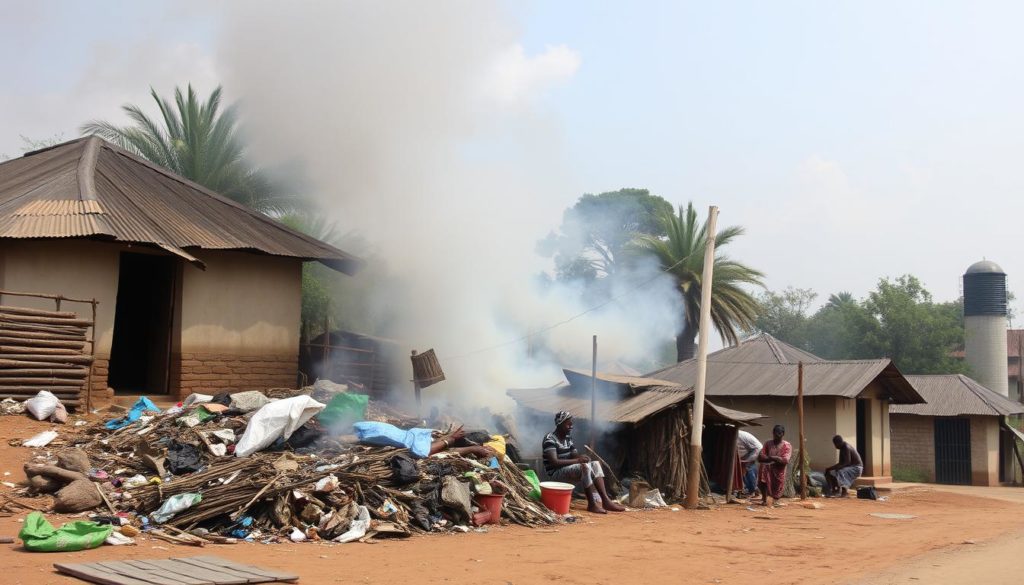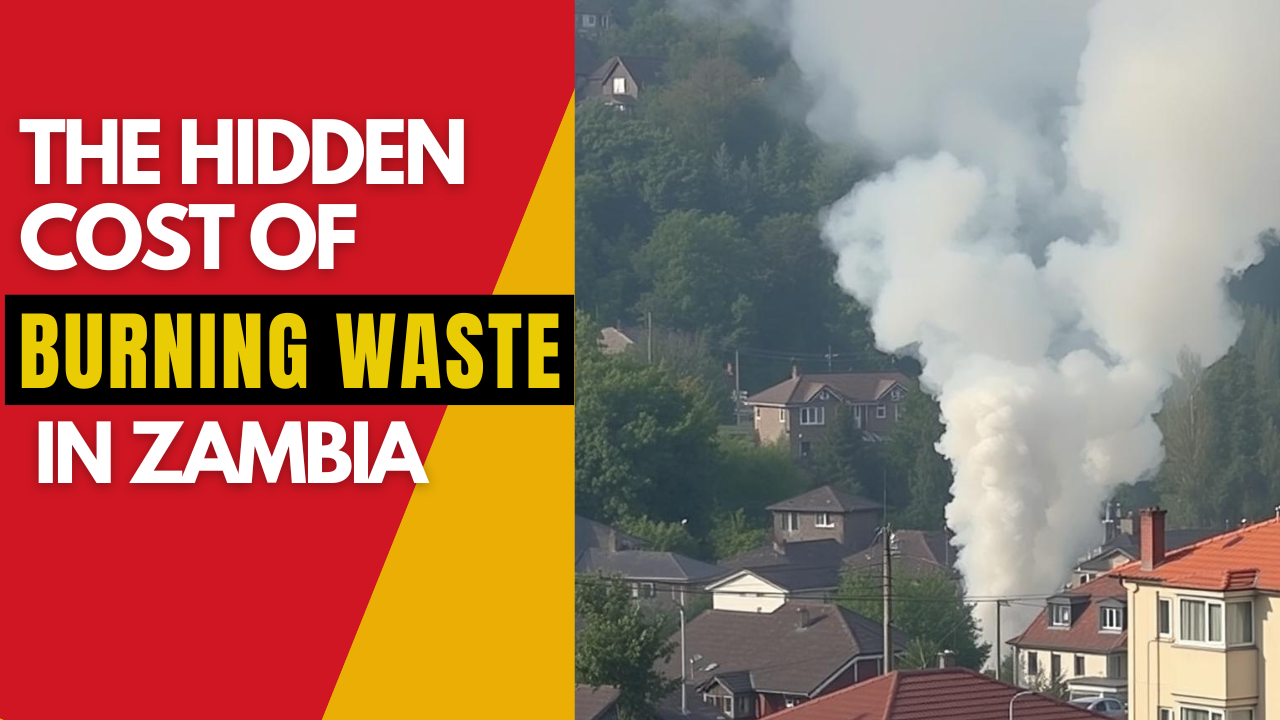Discouraging Burning Waste in Residential Areas
In many residential areas across Zambia, a common yet troubling practice persists—burning waste to avoid the costs associated with proper disposal. While this might seem like a convenient solution for some, the ramifications of this practice are far-reaching, contributing significantly to air pollution and posing a health risk to communities. This blog delves into the environmental and health impacts of burning waste, exploring why it continues and what can be done to address this issue.

The Prevalence of Burning Waste
In Zambia, the disposal of household waste can be challenging, especially in areas where formal waste management services are either unavailable or unaffordable. As a result, many residents resort to burning their waste, a practice that not only releases toxic fumes into the atmosphere but also exacerbates the already pressing issue of air pollution.
This method of waste disposal is prevalent in both urban and rural areas. In urban areas, where waste collection services might be sporadic or costly, residents often see burning as the easiest option. In rural areas, the lack of infrastructure and waste management facilities leaves residents with few alternatives.
The Impact on Air Quality
Burning waste releases a host of harmful pollutants into the air, including particulate matter, carbon monoxide, volatile organic compounds (VOCs), and dioxins. These pollutants contribute to air pollution, which is already a significant problem in many parts of Zambia. The air quality in areas where waste burning is common is often poor, leading to various health issues among residents.
Particulate matter, in particular, is a major concern. These tiny particles can penetrate deep into the lungs and even enter the bloodstream, causing respiratory and cardiovascular problems. For people with pre-existing conditions such as asthma or heart disease, exposure to high levels of particulate matter can be life-threatening.
Moreover, the smoke from burning waste is not just a local issue. It can travel long distances, affecting air quality in neighboring areas and contributing to regional air pollution. This makes it not only a community issue but a broader environmental concern.
Health Risks Associated with Waste Burning
The health risks associated with waste burning are significant. Inhaling the smoke from burning waste can lead to immediate and long-term health problems. Short-term exposure can cause respiratory irritation, headaches, and dizziness, while long-term exposure increases the risk of developing chronic respiratory diseases, cardiovascular disease, and cancer.
Children, the elderly, and individuals with pre-existing health conditions are particularly vulnerable to the effects of air pollution from waste burning. For children, exposure to polluted air can impair lung development and increase the risk of respiratory infections. For the elderly, it can exacerbate existing health problems and lead to a decline in overall health.
Environmental Consequences
Beyond the immediate health impacts, the environmental consequences of burning waste are profound. The release of greenhouse gases such as carbon dioxide and methane from burning organic waste contributes to climate change. Additionally, the burning of plastic and other synthetic materials releases persistent organic pollutants (POPs), which are long-lasting and can accumulate in the environment, causing further harm.
The practice also leads to the loss of valuable materials that could otherwise be recycled or composted. For instance, organic waste can be composted to create nutrient-rich soil, while plastics, metals, and glass can be recycled to reduce the demand for new raw materials. By burning waste, these resources are lost, and the cycle of consumption and waste continues.
What Can Be Done?
Addressing the issue of waste burning requires a multi-faceted approach. Public education is crucial to raise awareness about the health and environmental risks associated with burning waste. Communities need to be informed about the dangers of this practice and the benefits of proper waste disposal.
Improving waste management infrastructure is also essential. Providing affordable and accessible waste collection services can reduce the need for residents to burn their waste. In areas where formal waste management is not feasible, community-based waste management initiatives can be an effective alternative.
Finally, encouraging recycling and composting can help reduce the amount of waste that needs to be disposed of. By promoting these practices, communities can reduce their environmental footprint and minimize the need for waste burning.
Conclusion
The practice of burning waste in residential areas of Zambia may seem like a convenient solution, but its hidden costs are far too great to ignore. The impact on air quality, human health, and the environment is significant, and addressing this issue requires collective action. By improving waste management services, raising awareness, and promoting sustainable practices, Zambia can reduce air pollution and protect the health of its communities.



